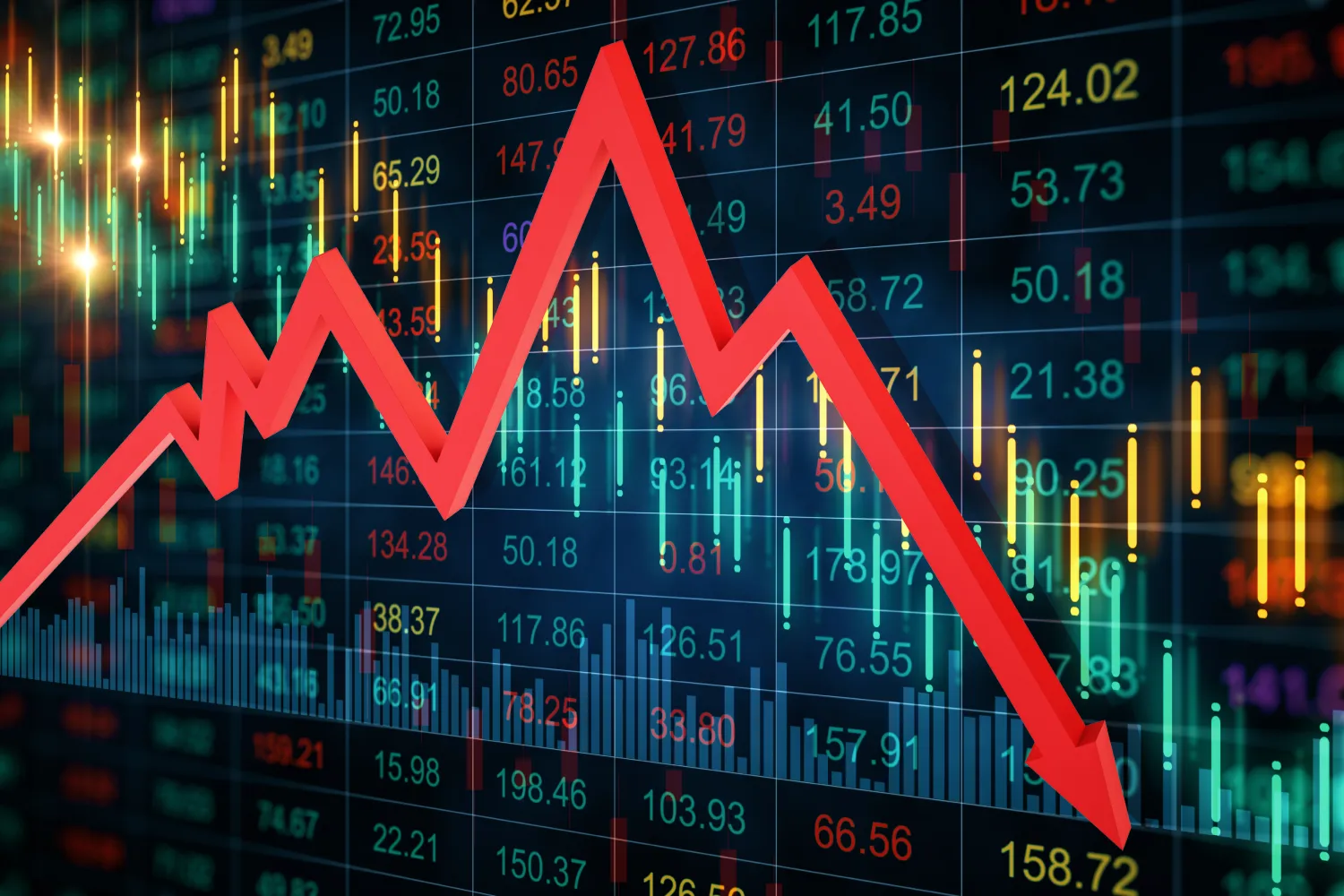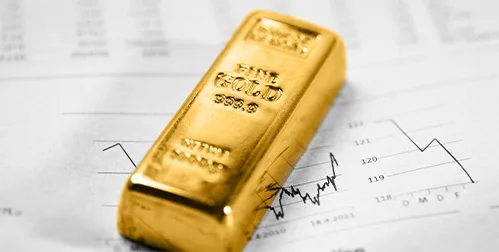- Gold prices have reached three back-to-back all-time record highs within the last few weeks alone
- Major banks such as JPMorgan and Goldman Sachs say we are in a commodities ‘supercycle’
- The Fed is signaling rate cuts even as inflation rises, and growth continues – creating a perfect support for gold demand
Gold Hits Record High Prices
Gold prices skyrocketed to a new all-time historic high of $2,222 after the Federal Reserve signaled a new dovish stance. The surge in gold prices confirmed predictions that we are in a new commodities supercycle. Gold prices are forecasted to keep rising as the stock market creeps closer to a crash. 1
 2
2
Interest Rates and Gold
Though the Fed is maintaining interest rates at 5.5% for the time being, Fed Chair Powell confirmed that 3 interest rate cuts are likely this year. The cuts could start as early as this summer.
The Fed dot plot shows a decrease to below 3% in the coming years. The Fed dot plot is a visual representation of Federal Reserve officials’ projections for future interest rate changes. It illustrates their individual estimates with dots on a chart. Notably, the cuts are predicted despite their increasing estimates for 2024 GDP growth and inflation.
Historically, gold has a negative correlation to interest rates. When rates drop, gold rallies. This reflects gold’s appeal as an alternative to interest-bearing assets. Some are interpreting this as a shift in their inflation fight. This shift creates a perfect scenario for gold to grow – lingering inflation and lowering interest rates.
Gold Hits New Highs Amidst Supercycle
Gold prices hit a new all-time high for the third time this month on the Fed’s announcement. Gold prices have breached $2,159 an ounce, $2,180 an ounce and the $2,222 an ounce mark – reaching three back-to-back all-time record highs within the last few weeks alone. Never before in history has there been multiple all-time record highs in such a short space of time.3
Since 2021, Goldman Sachs, JPMorgan and Bank of America have been calling this the beginning of a new commodities supercycle. They have gone so far as to call commodities the “preferred asset class over the next decade.” Four years later, the commodities supercycle is only speeding up, especially for gold. The yellow metal is positioning itself as one of the best performing asset classes of 2024. 4
Analysts at GSC Commodity Intelligence are calling it – “the beginning of a new historic Supercycle for Gold”. Gold is being driven by powerful tailwinds including rising geopolitical tensions and strong central bank purchases. In addition, Chinese demand is growing as their economy become unstable. A high-stakes presidential election is also sending people looking for hedges against upcoming uncertainty. Gold is finding support at above $2,100 and could hold at $2,150. All these factors have analysts thinking gold will reach $3,000 an ounce faster than anyone expects. 5
Rate Cuts, Uninverted Yield Curve & Recession
The inverted yield curve has long been a reliable recession warning. This abnormal pattern of short-term Treasury bonds yielding more than longer-term ones has been projected to end by December 2024. That is according to a Reuters poll of 62 bond strategists. The Federal Reserve’s rate cuts are likely to revert the curve back to its customary upward-sloping direction. Recession usually occurs when the curve “uninverts”.
The last two “uninversions” were in August of 2007, followed by the Great Recession, and in the fall of 2000, followed by the ‘Dot-bomb’ recession in 2001. After 2000, gold went on to outperform the stock market for the next twelve years.6
Politically Motivated Cuts
While the Fed has maintained a data driven decision making process, some analysts are assigning political motivations. A dovish turn would boost the market and make investors, large and small, happier with the current administration. Also, it would delay the onset of the impending recession until after the election. Thus, sparing the administration the damage a recession would cause to election chances.
In addition, a cut in rates will help ease the growing pressure they are facing to deal with the astronomical national debt. Across the board, the debt is being recognized as an existential existential crisis for the country. By reducing rates, the cost to service the debt will decline, and buy the government more time to kick the can down the road. Ultimately though, the market will fall, recession will begin, and the national debt will have to be dealt with. When that time comes, the demand for safe haven gold is likely to spike.
Conclusion
The gold supercycle is revving up. The precious metal continues to rapidly break all-time high prices. Economic conditions support the upward trajectory. At the same time, the stock market is in the ninth inning of a bull market. Americans have a choice between speculating and getting out before the bubble bursts or buying into a bullish trend likely to continue for years to come. Now is the time to investigate how a Gold IRA can capitalize on the precious metal’s upswing. Contact American Hartford Gold today at 800-462-0071 to learn more.




